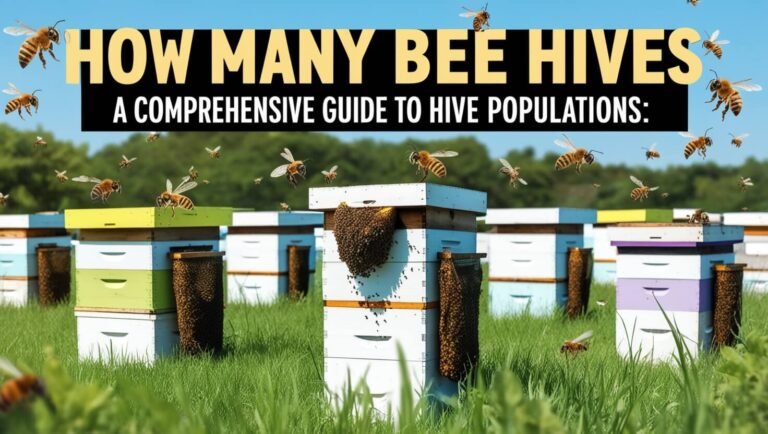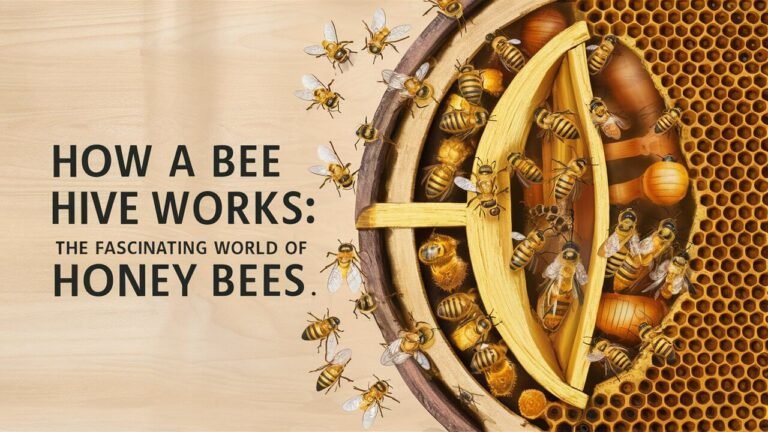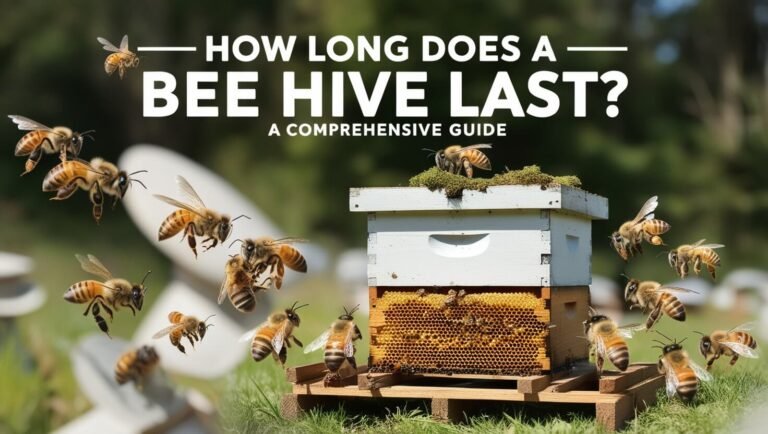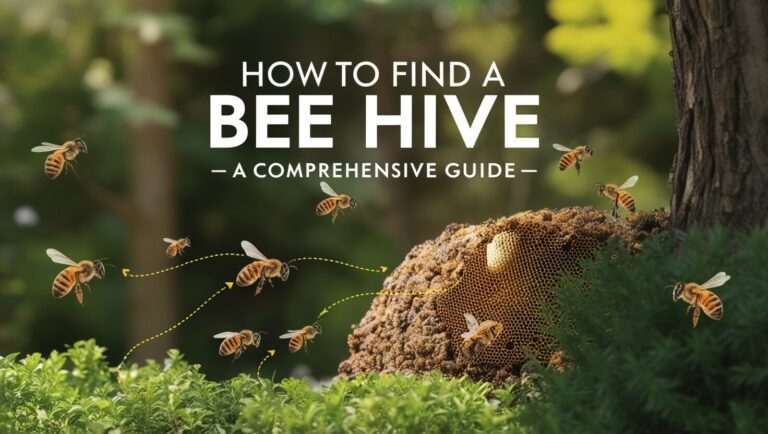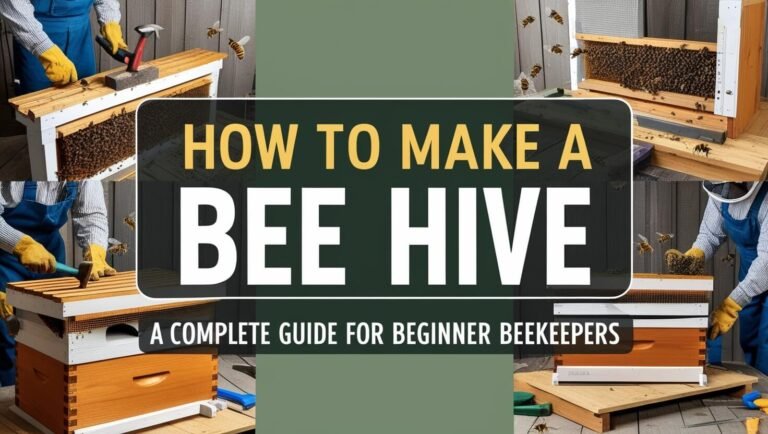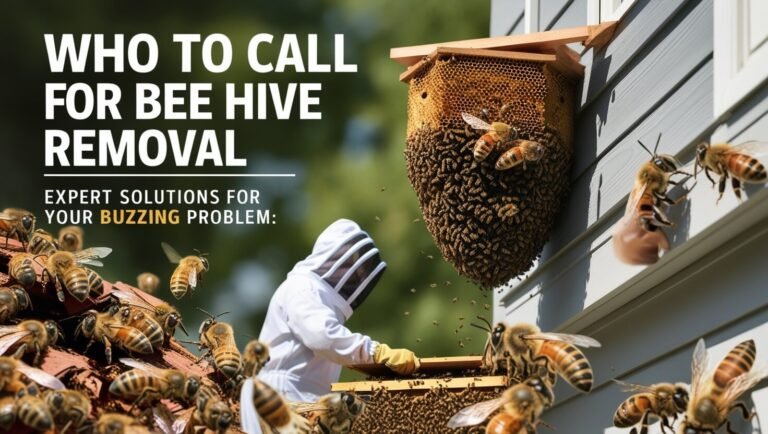What Is a Bee Hive Made Of? A Comprehensive Guide to Nature’s Architectural Marvel

Bee hives are incredible structures made primarily of beeswax and propolis. These natural materials are produced by worker bees and used to construct the intricate honeycomb and protective outer layers of the hive. The complex design of a bee hive showcases nature’s engineering at its finest, providing a safe and efficient home for the colony.
The Basic Components of a Bee Hive
To understand what a bee hive is made of, we need to look at its basic structure. Bee hives consist of two main parts: the outer structure and the inner workings.
The Outer Structure: Nature’s Shelters
In the wild, bees often choose existing shelters for their hives. These can include:
- Hollow tree trunks
- Rock crevices
- Abandoned animal burrows
- Man-made structures like walls or attics
Bees adapt these spaces to suit their needs, using various materials to create a secure home.
The Inner Workings: Honeycomb and Its Construction
The heart of any bee hive is the honeycomb. This intricate structure is made up of hexagonal cells arranged in sheets. The honeycomb serves multiple purposes:
- Storing honey and pollen
- Raising young bees (brood)
- Regulating hive temperature
The honeycomb is a marvel of natural engineering, maximizing space efficiency and structural integrity.
The Primary Material: Beeswax
Beeswax is the main building material of a bee hive. This versatile substance is crucial for creating the honeycomb structure.
How Bees Produce Wax
Worker bees produce beeswax through a fascinating process:
- They consume honey to stimulate wax production.
- Special glands on their abdomen secrete wax flakes.
- The bees chew these flakes to soften them.
- They then mold the wax into the desired shape.
This process requires a significant amount of energy. Bees need to eat about 8 pounds of honey to produce 1 pound of wax.
Properties and Uses of Beeswax in the Hive
Beeswax has several properties that make it ideal for hive construction:
- Malleability: Easy to shape when warm
- Durability: Resistant to water and many chemicals
- Low melting point: Allows for easy repair and restructuring
- Antimicrobial properties: Helps keep the hive clean
Bees use wax not only for building cells but also for capping honey stores and sealing small cracks in the hive.
Propolis: The Bee Hive’s Secret Weapon
While beeswax forms the main structure, propolis plays a crucial role in fortifying the hive.
What Is Propolis and How Do Bees Make It?
Propolis, often called “bee glue,” is a resinous mixture that bees collect from tree buds, sap flows, and other botanical sources. They mix this with wax, honey, and enzymes from their own saliva to create a powerful, protective substance.
The Role of Propolis in Hive Construction and Maintenance
Propolis serves several important functions in the hive:
- Sealing gaps and cracks
- Reducing vibration
- Preventing diseases and parasites
- Mummifying intruders that bees can’t remove
This remarkable substance has antimicrobial, antifungal, and antiviral properties, contributing significantly to hive health.
The Intricate Design of Honeycomb
The honeycomb is perhaps the most recognizable part of a bee hive. Its design is a testament to nature’s efficiency.
The Hexagonal Cell Structure: Nature’s Perfect Design
Bees construct their combs using hexagonal cells. This shape offers several advantages:
- Maximum storage space with minimum material
- Structural strength
- Efficient use of space
The hexagonal design allows bees to store about 2 pounds of honey in just 1 pound of wax.
How Bees Build Perfectly Aligned Cells
Bees work together to create perfectly aligned cells:
- They start by building a base of circular cells.
- As they work, the heat from their bodies softens the wax.
- The cell walls naturally settle into the hexagonal shape.
- Bees then refine and perfect the structure.
This process results in an incredibly precise and efficient structure.
Other Materials Used in Hive Construction
While beeswax and propolis are the main components, bees use other materials in hive construction.
Plant Resins and Their Importance
Bees collect resins from various plants to create propolis. These resins contribute to the hive’s overall health and structure:
- Pine resin
- Poplar buds
- Birch bark
Each type of resin brings unique properties to the propolis mixture.
The Use of Pollen in Hive Building
While not a construction material per se, pollen plays a vital role in the hive:
- It’s stored in cells for food
- It provides proteins essential for bee development
- Some pollen may be mixed into propolis
Pollen collection and storage are crucial for the hive’s survival and growth.
The Role of Worker Bees in Hive Construction
Worker bees are the primary builders and maintainers of the hive.
Division of Labor in the Hive
Different age groups of worker bees have specific roles in hive construction:
- Young workers (12-17 days old) produce wax and build comb
- Middle-aged workers repair and maintain the structure
- Older workers focus on foraging for materials
This division ensures efficient hive management and construction.
The Lifespan of Worker Bees and Their Building Duties
Worker bees live for about 4-6 weeks during the busy season. Their building duties change as they age:
- Days 1-3: Cleaning cells
- Days 3-16: Feeding larvae and producing wax
- Days 16-20: Building and repairing comb
- After day 20: Foraging for nectar, pollen, and resins
This progression allows for continuous hive maintenance and expansion.
Natural vs. Man-Made Bee Hives
While we’ve focused on natural hives, it’s worth comparing them to man-made structures.
How Wild Bees Choose and Construct Their Homes
Wild bees seek out suitable locations based on several factors:
- Protection from the elements
- Adequate space for colony growth
- Proximity to food sources
- Safety from predators
Once a site is chosen, bees quickly begin building their new home.
Materials Used in Modern Beekeeping Hives
Modern beekeepers use various materials to create hives:
- Wood (most common)
- Plastic
- Polystyrene
These hives often include removable frames to aid in honey harvesting and hive management.
The Science Behind Hive Construction
Bee hive construction is a marvel of natural engineering.
Temperature Regulation Within the Hive
Bees maintain a constant temperature of about 95°F (35°C) in the brood area. The hive’s structure plays a crucial role in this:
- Wax has insulating properties
- Propolis seals gaps to prevent drafts
- Bees can adjust cell size for better temperature control
This precise temperature control is essential for brood development and honey production.
Structural Integrity and Load-Bearing Capacity
Despite being made of wax, honeycombs are surprisingly strong:
- They can support up to 30 times their own weight
- The hexagonal structure distributes weight evenly
- Propolis reinforces weak points
This strength allows bees to store large amounts of honey without risking structural collapse.
Fascinating Facts About Bee Hive Construction
The process of hive building is full of interesting details.
The Speed of Hive Building
Bees can work incredibly quickly when needed:
- A strong colony can build up to 6 square inches of comb per day
- In ideal conditions, bees can fill a medium-sized hive box in about 2 weeks
This rapid construction allows colonies to take advantage of short flowering seasons.
Hive Size and Capacity
Bee hives can vary greatly in size:
- Wild hives might contain 8-15 pounds of bees
- A large, healthy hive can house up to 60,000 bees
- A single hive can produce 60 pounds or more of honey in a good year
The size and productivity of a hive depend on many factors, including bee species, location, and available resources.
Common Questions About Bee Hive Materials
Let’s address some frequently asked questions about bee hive construction.
Are All Bee Hives Made the Same Way?
Not all bee hives are identical. Factors that influence hive construction include:
- Bee species (honeybees vs. bumblebees, for example)
- Geographic location
- Available materials
- Colony size
While the basic principles remain the same, there can be significant variations in hive structure and composition.
How Long Does a Bee Hive Last?
The lifespan of a bee hive depends on several factors:
- In the wild, hives can last for several years if undisturbed
- Man-made hives can last 5-20 years with proper maintenance
- Individual combs may be replaced every few years
Bees constantly maintain and repair their hives, which helps extend their lifespan.
The Importance of Hive Materials for Bee Health
The materials used in hive construction play a crucial role in maintaining bee health.
How Hive Materials Protect Against Pests and Diseases
Both beeswax and propolis have protective properties:
- Beeswax contains compounds that inhibit bacterial growth
- Propolis has strong antimicrobial properties
- The hive structure helps regulate humidity, preventing mold growth
These natural defenses are crucial for keeping the colony healthy.
The Impact of Environmental Factors on Hive Materials
Environmental conditions can affect hive materials:
- Extreme heat can cause wax to melt
- Cold temperatures can make wax brittle
- High humidity can promote mold growth
Bees constantly work to maintain their hive in the face of these challenges.
Final Verdict: The Marvel of Bee Hive Engineering
In conclusion, bee hives are remarkable structures made primarily of beeswax and propolis. These materials, produced by the bees themselves, create a home that’s sturdy, efficient, and perfectly adapted to the needs of the colony. From the hexagonal cells of the honeycomb to the protective layer of propolis, every aspect of a bee hive showcases nature’s ingenuity.
Understanding what a bee hive is made of gives us insight into the complex world of these incredible insects. It highlights the importance of preserving bee habitats and supporting bee populations, as their engineering marvels play a crucial role in our ecosystem.
The next time you see a bee buzzing by, remember the intricate home it’s helping to build and maintain. It’s a testament to the power of collective effort and the wonders of natural design.

